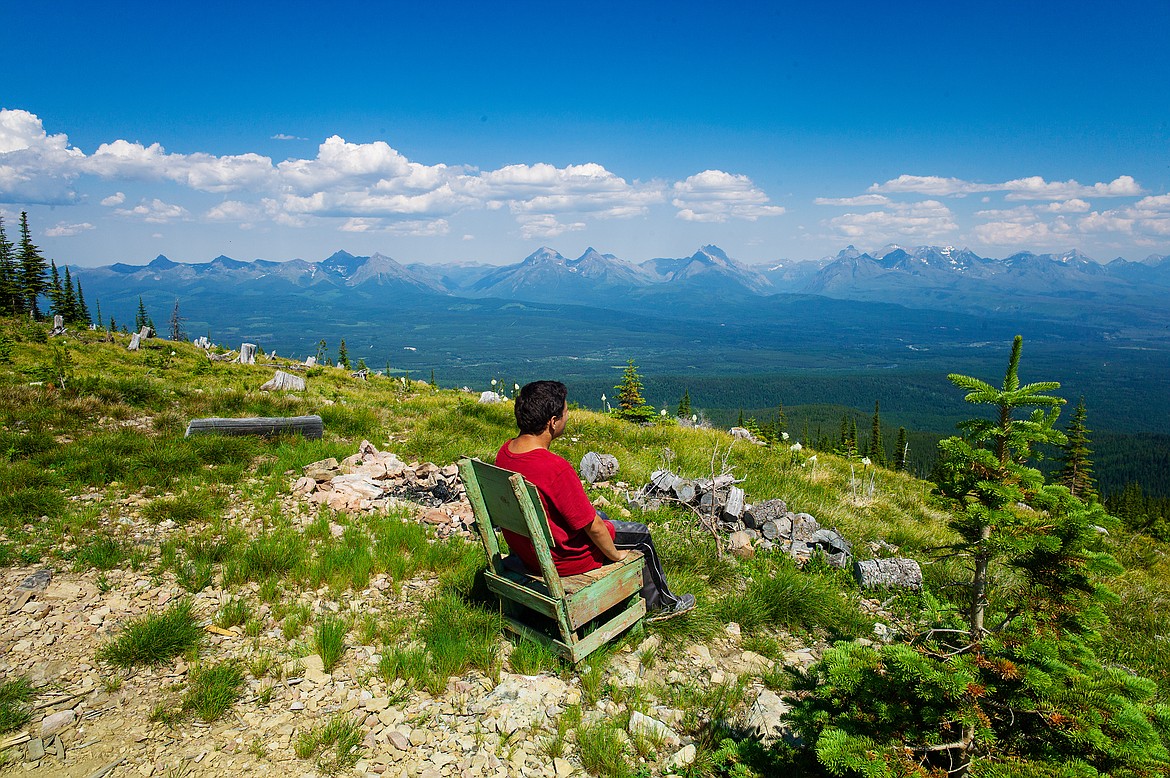Officials OK North Fork forest project
KIANNA GARDNER | Hagadone News Network | UPDATED 4 years, 8 months AGO
Forest officials recently OK'd a large project on the Hungry Horse-Glacier View District that spans thousands of acres from Red Meadow Creek to the Candadian Border.
The Frozen Moose project area encompasses more than 150,000 acres and is bound to the west by the Kootenai National Forest and to the east by the North Fork of the Flathead River. The swath includes Trail Creek, Whale Creek, Teepee Creek, Moose Creek and Red Meadow Creek drainages.
The selected alternative includes 7,250 acres of vegetation management. Prescribed burning activities and whitebark pine restoration activities originally proposed are not included in the final alternative.
The project was introduced in 2019 and was approved last week by Flathead National Forest Supervisor Kurt Steele. Work is expected to begin immediately.
The primary goals of the timber harvest are to improve the diversity and resilience of vegetation, maintain and improve aquatic ecosystems, provide a mix of forest products to local mills, reduce tree densities and fuel loadings and reduce fire intensity.
Records show there has been a history of fire disturbances in the North Fork area that have threatened and/or destroyed residences and infrastructure over the years. For example, a fire burned nearly 45% of the project area between 1910 and 1929. In 1988, another fire consumed over 10,000 acres.
Many of the fires moved west to east as they burned, spreading from the North Fork into Glacier National Park. Officials believe the Frozen Moose Project will ultimately reduce the severity of wildfires in the area.
ACTIVITIES THAT were approved by Steele include approximately 3,180 acres of commercial vegetation treatments and 4,070 acres of noncommercial treatment. The total sawtimber volume is estimated at 1.1 million board feet. Tree removal for units with commercial products will be a ground-based mechanized harvest.
According to the Forest Service, treatments will require 13 miles of historical roadbeds to be returned to the system. Another 6 miles of temporary road will be constructed as well. All roads will be made impassable following harvest activities. Public motorized access that exists in the area won’t change.
Aquatic improvement work will include the restoration of 3.3 miles of historical roads, replacement of 14 culverts and removal of four other culverts.
The final decision notice says while there are some short-term negative effects to aquatic species, the aquatic restoration activities “would reduce the risk of road and culvert failures and associated sediment production from entering these streams, benefiting bull trout, westslope cutthroat trout and other aquatic species in the long-term.”
Bull trout are one of the endangered and threatened species researchers prepared biological assessments for in order to see if proposed activities would impact the species and/or their habitats. Other species include the grizzly bear and Canada lynx, both of which may be adversely affected by Frozen Moose activities.
ALL TOLD, the Forest Service received 10 comments on the project during a 45-day objection period that ended Nov. 30, 2020. Eight of those were in opposition of the proposed activities.
According to the agency’s online reading room, concerns centered around the construction of new roads and whether they are actually necessary to complete the project, and possible impacts to wildlife habitat.
In a handful of letters, those concerns went hand-in-hand. For example, in a statement of opposition from Wildearth Guardians, the organization argued “best available science shows that forest roads have numerous negative impacts on grizzly bears, bull trout, and Canada lynx, and can adversely impact water quality. Yet under this project, the Forest Service proposes to add 13 miles of unauthorized roads to the transportation system and construct or reconstruct 6.8 miles of temporary roads all within secure grizzly bear core habitat.”
Comments were submitted by other organizations including Friends of the Wild Swan, American Forests Resource Council, Swan View Coalition and the Sierra Club.
Reporter Kianna Gardner may be reached at 758-4407 or [email protected]
ARTICLES BY KIANNA GARDNER

Vaccine mandate could impact staffing at Flathead nursing homes
Montana's long-term care facilities could face staffing challenges and financial uncertainty if the Biden administration moves forward with a plan to require Covid-19 vaccinations for staff at federally funded nursing homes.

Flathead Covid vaccination rate ticking upward
Health officials say Flathead County's Covid-19 vaccination rate is ticking upward by nearly 1% each week, a promising trend as the highly contagious delta variant continues to move through the valley's unvaccinated population.
Flathead COVID-19 surge strains hospital, health department
Flathead County continues to see an uptick in Covid-19 infections, hospitalizations and deaths. The county had 690 active cases on Wednesday — the highest number the area has seen since February, according to local health officials.

